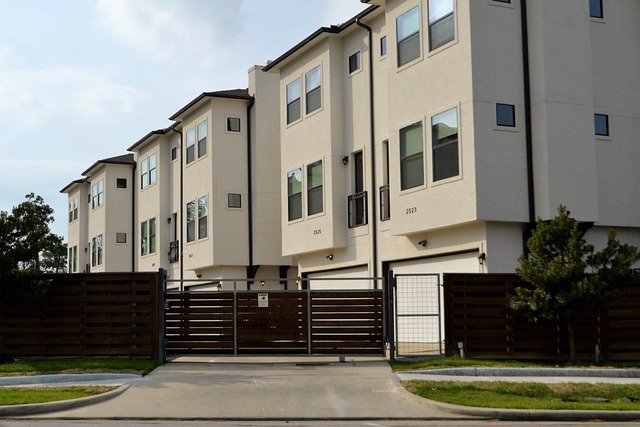Understanding Repossessed Houses in Canada
Repossessed houses, also known as bank-owned or REO (Real Estate Owned) properties, represent homes that have gone through the foreclosure process and are now owned by financial institutions. In Canada, these properties typically become available when homeowners default on their mortgage payments and the lender takes ownership through legal proceedings. Understanding the nature of these properties, their pricing structures, and the buying process can help potential purchasers make informed decisions in the Canadian real estate market.

What Are Bank-Owned Properties? Your Guide to REO Homes
Bank-owned properties in Canada are residential homes that financial institutions have acquired through foreclosure proceedings. When homeowners fail to make mortgage payments for an extended period, typically three to six months, lenders initiate foreclosure actions. The process varies by province, with some jurisdictions requiring judicial proceedings while others allow power of sale provisions. Once the foreclosure is complete and the property doesn’t sell at auction, it becomes a Real Estate Owned (REO) property. These homes are then managed by the bank’s asset management division or contracted real estate companies. Banks generally prefer to sell these properties quickly to recover their investment and reduce carrying costs, which can create opportunities for buyers seeking below-market pricing.
Foreclosed Homes vs. Traditional Sales: Key Differences
Several significant differences distinguish foreclosed home purchases from traditional real estate transactions in Canada. Traditional sales typically involve motivated sellers who maintain their properties and provide disclosures about known issues. In contrast, foreclosed properties are often sold “as-is,” meaning buyers assume responsibility for any repairs or maintenance issues. The timeline also differs substantially – traditional sales may allow for extended negotiations and conditional periods, while bank-owned properties often require faster decisions and shorter inspection periods. Additionally, banks rarely provide the same level of property disclosure as individual sellers, and financing arrangements may have stricter requirements or shorter approval timelines. The emotional aspect is another key difference, as banks approach sales from a purely financial perspective without the emotional attachment typical homeowners have to their properties.
Understanding Pricing & Discounts on Bank-Owned Properties
Pricing strategies for bank-owned properties in Canada typically reflect the lender’s desire to recover outstanding mortgage debt while minimizing holding costs. Banks often price these properties at or slightly below current market value to encourage quick sales, though significant discounts aren’t always guaranteed. The actual discount depends on factors including local market conditions, property condition, and how long the bank has held the asset. In hot real estate markets, bank-owned properties may sell at or near market value due to high demand, while in slower markets, discounts of 10-20% below market value are more common. Banks also consider carrying costs such as property taxes, insurance, maintenance, and security when setting prices. Properties requiring substantial repairs may offer deeper discounts, but buyers must factor renovation costs into their total investment calculations.
Advantages & Disadvantages of Buying Bank-Owned Homes
Purchasing bank-owned properties offers several advantages for Canadian buyers. The primary benefit is potential cost savings, as banks are motivated sellers seeking quick transactions. Clear title is another advantage – banks ensure all liens and encumbrances are resolved before listing. The negotiation process can be more straightforward since banks make decisions based on financial criteria rather than emotional factors. However, disadvantages include limited property disclosure, as-is condition sales, and potentially shortened inspection periods. Buyers may discover hidden issues after purchase, from deferred maintenance to vandalism or weather damage. Financing can also be more complex, as some lenders have stricter requirements for distressed properties. Additionally, competition from investors and other buyers seeking deals can drive prices up and reduce negotiating power.
The Buying Process for Bank-Owned & Foreclosed Properties
The buying process for bank-owned properties in Canada involves several distinct steps that differ from traditional purchases. Buyers should first obtain mortgage pre-approval, as banks often require proof of financing with offers. Property research is crucial – investigating the home’s history, neighborhood market values, and potential renovation costs. Working with real estate agents experienced in foreclosure sales provides valuable guidance through the process. When making offers, buyers should be prepared for limited negotiation flexibility and shorter response times. Due diligence periods may be compressed, requiring quick property inspections and appraisals. Legal representation becomes particularly important given the as-is nature of these sales and potential complexities in documentation. Buyers should also budget for immediate repairs and factor these costs into their purchase decisions.
| Property Type | Typical Discount Range | Average Processing Time | Required Documentation |
|---|---|---|---|
| Bank-Owned REO | 5-20% below market | 30-45 days | Pre-approval, proof of funds |
| Power of Sale | 10-25% below market | 21-35 days | Financing confirmation, legal review |
| Judicial Foreclosure | 15-30% below market | 45-60 days | Court documentation, title search |
Prices, rates, or cost estimates mentioned in this article are based on the latest available information but may change over time. Independent research is advised before making financial decisions.
Purchasing repossessed houses in Canada requires careful consideration of both opportunities and risks. While these properties can offer cost savings and investment potential, buyers must approach transactions with thorough research, appropriate professional guidance, and realistic expectations about property conditions and market dynamics. Success in this market segment depends on understanding the unique characteristics of bank-owned properties and preparing for a different buying experience than traditional real estate purchases.




